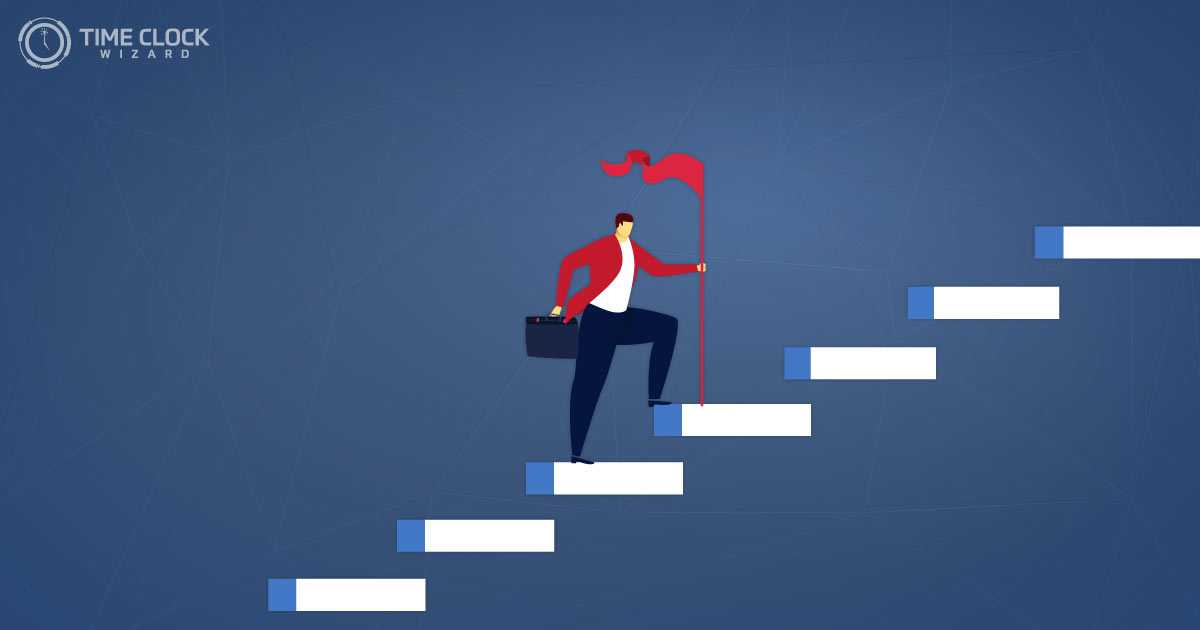
Running a business is no easy feat, and every business is built with an understanding that it will rely on the collective efforts of individuals working together as part of a team. The power of a virtual team is becoming increasingly clear in this digital age, with amazing things being achieved by groups made up of people who may never meet in person. A business leader needs to understand group development and how to make sure their teams are getting maximum productivity out of their personnel, putting human talent at the core of success. This way, all business owners and stakeholders can be confident that any growth they achieve is thanks to teams made up of individuals working together for common goals.
Virtual teams are a relatively recent phenomenon, and studying their development accurately is essential to increase the effectiveness of these arrangements. By understanding how teams are formed, grow, adapt, and achieve their goals, we can construct a framework of tools and best practices that foster successful virtual team formation and performance. Different team structures require strategies to initiate, manage, and nurture participation. Through research into the various stages of virtual team development, we can develop an in-depth understanding of each stage so that organizations have a better chance of managing them efficiently and effectively. This article will examine the stages of virtual team development to give insights into learning what processes underpin successful virtual team dynamics.
Virtual Team Development: Building an Effective Virtual Team
Virtual team development is an increasingly important aspect of business in today’s competitive, digital world. The dynamics of workplace interactions can have a major impact on achieving desired business outcomes, so understanding the different stages of team development has become essential for responsible leaders. With knowledge of the developmental process, businesses can nurture the best environment to maximize their chances of success and ensure each member of the virtual team is able to rise to their full potential. A shared understanding of how teams form and progress also helps foster collaboration within an organization, which ultimately drives greater success.
The Five Stages of Virtual Team Development
The team development process is a framework created by Psychologist Bruce Tuckman in 1965 to illustrate how groups grow and develop. This team development model, also called the Tuckman Ladder or the Tuckman model, suggests that teams go through five stages – forming, storming, morning, performing, and adjourning – each of which leads to the next and is essential for productive team dynamics. This useful team development model is as applicable today as when it was formulated, helping virtual teams penetrate the difficult layers to reach peak performance. Each step of the ladder serves a very specific purpose within the team’s process and builds on the successes achieved by the team’s previous stage. From Formation to Norming, Performing, and eventually Adjourning, each step builds on the team’s dynamics, allowing them to work together more effectively in a virtual setting.
First Stage: Forming

In the forming stage, members become familiar with their roles in the group, and a structure is established.
Team members begin excited about the start of a project but are still unaware of the organization’s purpose and company culture. The mature section of the virtual team will start to bring up discussions about the scope of the task and explore ways to approach it. As the team members begin to learn about their roles and responsibilities, this is the time for virtual team leaders to support this stage to establish a good foundation for the coming stages.
When forming a virtual team, it is important for group members to first get to know each other and understand the team process. Support the Forming stage by allowing time for team bonding, acknowledging that this process takes longer for virtual teams, and providing direction and purpose to your team. Facilitating conversation and storytelling is one effective activity group members can do to break the ice and build rapport among one another. Setting group expectations, creating group norms, and discussing group roles are also great activities that will help group members better understand what they should expect while working with each other in a virtual setting. By engaging in these activities, group members can easily transition into their roles and begin effectively working together.
Use orientations and onboarding as an opportunity to connect with your team members. Focus on the team members more than the work to be done at this stage of group development. Leading virtual teams is trickier since interactions are not face-to-face. Onboarding members of virtual teams can make a significant difference in the group’s ability to build strong relationships and succeed. It is especially important for group members to have an understanding of their teammates as part of the leadership process. This can be done through an orientation that focuses on getting to know each other and developing a shared understanding that everyone brings unique skills and contributes value to the group. Virtual leadership can be tricky as there are fewer opportunities for group members to get acquainted face-to-face, but intentional steps taken during onboarding will lay a solid foundation on which team relationships and group dynamics can thrive.
Second Stage: Storming

The storming stage sees tension arise amongst team members, often as individuals’ opinions or goals clash. Virtual teams now move beyond the introductory phase and put plans into action.
In the storming stage, virtual team leaders should be aware that sub-groups may develop in the team. Distractions from relationships and emotional issues may affect team performance.
Guiding a team through the storming stage has been difficult even in normal office settings, but it is especially challenging to facilitate in a virtual environment. Virtual team leaders must remain cognizant of the amount of stress their team members are under and make sure that any feedback given is professional and courteous. Here are some ways to guide your virtual team through this stage:
- One way to accomplish this is by increasing skill-building opportunities, which can improve the efficacy of the team and foster an environment that encourages growth and development.
- Accepting constructive criticism from peers is also essential for productive problem-solving, and defining rules of engagement upfront will allow for confidential dialogue with no judgment or ill intentions.
- Ultimately, a supportive work environment where everyone can feel respected will create an atmosphere where creativity can flourish despite these unusual times.
Third Stage: Norming

Maturing from one conflict resolution after another during the storming stage, the team members will eventually lead to an understanding of roles, resulting in the norming stage, where mutual respect is formed amongst the group.
Working in teams can be challenging when individuals have different approaches to tasks. Still, it is possible to overcome those initial hurdles with some effective communication and an understanding of each team member’s skillsets and preferences. Once the differences in teammate behaviors are acknowledged, teams can develop strategies to move past them quickly. By focusing on their common goal and emphasizing their collective strengths, teams can then make steady progress toward achieving success. These adjustments require patience and effort from all involved parties, but the results speak for themselves. These transitions make up the norming phase.
Writing down norms for a team is a great way to encourage and promote norming. Doing so creates structure and allows everyone on the team to understand the role of each team member. By transparently discussing and defining roles, boundaries, expectations, and procedures, members of the team feel more involved in the decision-making process. Furthermore, these norms open the door for collaboration by providing team members with an understanding of how they can work together in an efficient and effective way while keeping the intended purpose at the top of their minds. Writing down norms establishes trust between all parties involved, which reinforces relationships and moving forward together as a unified whole.
Want your business to thrive?
Boost your team’s productivity and efficiency ratings with time tracking!

Take note: An essential part of any team’s success is the establishment and agreement over appropriate norms. Without clear documentation, these important standards will remain unclear – potentially hindering collaboration efforts. Virtual teams can make use of Time Clock Wizard’s customized notifications to give reminders of these important standards.
Fourth Stage: Performing Stage

In the performing stage, teams reach true commitment and synergy. As they become specialists in collaboration, effective decision-making translates into tangible successes with minimal management supervision. With hearty cooperation between teammates comes great progress – a successful marriage of minds!
When leading virtual teams during this stage, we should watch out for factors that might shift the progress back to the forming and storming stages. Remember that there can be many external distractions or disruptions. One common example of this is organizational politics. Things could be taken out of context, or miscommunications may happen between team members. Team awareness is paramount in the virtual teams’ development during this stage.
Global virtual teams should always be reminded that trust and positivity are essential in achieving team success, especially during this stage. Team members find ways to be productive and collaborative.
Fifth Stage: Adjourning Stage

Finally, after completion of the goal and objectives of the team, members enter the adjourning stage and formally complete their work with closure achieved to bring the task or project full circle. Aside from this, events such as the introduction of a new team member into the group also trigger a shift of group dynamics to the adjourning stage.
There is a grieving stage that employees go through, attributed to the major shift in team expectations, whether it is a change of project, change in team composition, or a culmination of a project.
In the virtual world, it is easier for people to disengage from their teams once a project is over. Recognition of their achievements and contributions helps assure employees of their importance to the team. A toast for each other’s hard work on the project is a great team building opportunity to provide closure among team members and facilitate reflection on the experience.
Takeaways
Understanding team development and its distinctive stages(like in the Tuckman model) is essential for businesses looking to foster strong and collaborative cultures. A unified working environment can help organizations to nurture trust, communication, problem solving abilities, and innovation – all critical components for long-term success. By examining the dynamics between members of the team and understanding its unique development, virtual teams can become well-synchronized and more effective in achieving common objectives. By recognizing its process from initiation to termination, companies can make full use of team development’s relationship building capabilities that maximize group productivity while minimizing any further conflict.





